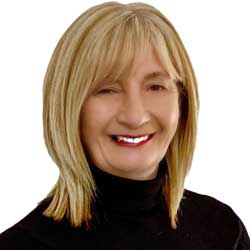Hub, home and roam
How a rural landlord in Scotland closed its central office in favour of regional hubs and home working to better support its communities
The idea of switching from the traditional head office working arrangement to a ‘hub, home and roam’ model is one which many – if not most – housing providers either looked at or fully embraced during the pandemic.
But at Loreburn Housing Association in Dumfries and Galloway, chief executive Lorraine Usher was already a long way down the decentralised road well before Covid-19 struck. That’s because her organisation had realised that the old set-up was no longer fit for purpose for an organisation with Loreburn’s geographic spread.
“Dumfries and Galloway is geographically dispersed,” explains Usher. “Between our two offices of Dumfries and Stranraer, there’s an hour and a half’s drive, on a good day. So getting around the region has always been a real challenge and impacted on our ability to do business because you could have quite a significant drive between appointments.”
Sustainability of villages
Loreburn began thinking about how to change this dynamic in 2017: “Instead of bringing all of our 100-plus staff out of those rural areas every morning, [we thought] how could we have an operational model that would actually contribute to the sustainability of the villages and the towns where we had housing, but also where our staff lived?”
The plan had been to shut the association’s central office at some point in 2021, but Covid accelerated that timetable. Now, employees either work from home, out in the communities where Loreburn’s residents live, or from regionalised ‘hubs’, where desks are rented in shared offices.
It is by no means a unique approach, especially in the post-Covid world, but Usher says it has been transformative. “The organisation that we have now is absolutely poles different from what we had just a few years ago,” she says. “If I took you into Loreburn’s offices four or five years ago, we would have had a couple of offices set aside for housing files, everyone had their own paper files, we had a computer system that was very limited in terms of the licenses that we had access to. We also really had a challenge to get people out on the patch and doing those transactional services with the customers.

Lorraine Usher CEO, Loreburn Housing Association
“Instead of bringing all of our 100-plus staff out of those rural areas every morning, [we thought] how could we have an operational model that would actually contribute to the sustainability of the villages and the towns where we had housing, but also where our staff lived?”
IT investment
“That was so difficult to move forward because staff couldn't get access to the data and the information they needed to offer a good service when they were in customers’ homes, because we didn’t have the IT facilities or equipment.”
Loreburn invested heavily in improving its tech at the start of the pandemic, but the greater challenge has been in bringing everyone along on the transformational journey. Initially, the organisation divided all roles into ‘fixed’, ‘flexi’ and ‘don’t know’ categories to help identify who was best placed to work in which environment.
“The majority of people at that time said: ‘Oh, I have to be fixed, I need to come into the office’ and it was really difficult to get them to buy into the vision of how you could do your job just as easily at home,” recalls Usher. “That was a real challenge: making people understand, for example, how you could do a finance job and be based at home.”
Introducing tools such as Microsoft Teams more universally across the business certainly helped, but an important lesson that Usher has learned is that not everyone will want to change how they work, and that finding the right fit between an organisation and the people who work there is essential if changes such as this are going to succeed.
Change not for everyone
“We've had several people who have either chosen to move on because they said this new working model wasn’t going to be for them, and we’ve had some people who’ve left the organisation because they weren’t going to be the right fit moving forward. So we have had some turnover. But [now] our job adverts are really clear that we are an organisation that delivers services where the customer needs them, and that we are flexible with our places of work.
“Work for us is not about trying to squeeze everyone into nine-to-five office hours in a structured office environment but allowing freedom and flexibility. Our ‘Being You’ principles allow people to choose their time, place and ways of working and from that we believe we’ll attract a more diverse workforce, become more sustainable and deliver improved outcomes.”

